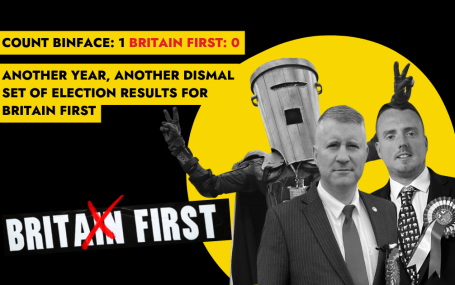HOPE not hate uses cookies to collect information and give you a more personalised experience on our site. You can find more information in our privacy policy. To agree to this, please click accept.
By Cas Mudde
This Sunday, more than 30 million Italians will go to the polls to elect a new legislature and, indirectly, a government. It will be the first major European election of 2018, after a somewhat confusing and inconsistent pattern of elections in 2017, and the international media is sparing few cliches.
Almost no journalist can resist making references to Italy’s almost inherent “political instability”, referring to the many “political crises” and national elections and governments the country has had in recent history – even though Italy had one government more and held one election less than the (allegedly stable) Netherlands in the 21st century.
For example, the neo-fascist group CasaPound has indeed become more visible, but it has hardly “brought Mussolini back to the mainstream”. First of all, CasaPound is much too small for such a sizeable popular effect.
Second, and more importantly, Mussolini has never been away from the mainstream. The neo-fascist Italian Social Movement (MSI) was represented in the Italian parliament from 1948 onward, until the party transformed into National Alliance (AN) and, with the help of Silvio Berlusconi, became a key player in early-21st-century Italian politics. While the AN described itself as “post-fascist”, party leader Gianfranco Fini still described Mussolini as “the greatest statesman in history” in 1994.
Similarly, populism is a threat to both Italian democracy, and the European project, but it has been for almost 25 years now. Silvio Berlusconi led his rightwing populist Forza Italia (FI) into a government with the populist radical-right Northern League (LN), and the “post-fascist” AN, for the first time in 1994.
He served as prime minister of three more governments, all with the LN. All these governments had contentious relationships with Italian liberal democracy, but so had most others. Remember that the Christian Democrat Giulio Andreotti, the second longest-serving prime minister of postwar Italy after Berlusconi, was tried (though not convicted) for mafia associations.

The problem is that these stories capture only part of the story and exaggerate the newness and uniqueness of developments in Italian politics. Yes, the 2018 elections are going to be a contest between three problematic camps – a right wing that includes the populist radical right, a left wing centered around a party without ideas, and an idiosyncratic populist one that is trying to figure out what it wants.
The fact that the elections will probably lead to difficult and protracted coalition formations is hardly unique to Italy either, as Belgium and the Netherlands have experienced these for decades, and even Germany is going through them now.
The upcoming Italian elections are, first and foremost, national elections, determined by particular Italian historical traditions and contemporary issues, which partly reflect broader European trends. They will undoubtedly give way to a politically unstable and weak new government, which will be unable to significantly improve the economic situation of the country and overcome the still massive regional economic differences. But while the boot of Europe remains the Achilles heel of the European Union, it will not bring the union down.
There are two reasons for this. The first reason is that Italian politicians talk a better game than they actually play. For all the public flirting with Euroscepticism and populism, Italian governments have caused the EU fewer problems than France or the Netherlands, let alone the United Kingdom. And today all major populist parties have significantly softened their Euroscepticism, from LN to M5S. The second reason, which is the more interesting one, is that the EU has long dealt with Italy as a myth rather than a reality.
During the first decades of European integration, corruption and organised crime were major problems for Italian politics, leading to the implosion of the political system in the late 20th century, but the European partners chose to ignore it.
When the Maastricht treaty established the common currency, Italy was accepted into the eurozone on the basis of official statistics that everyone knew were doctored. It was only during the height of the great recession that the EU stepped in and more or less forced Berlusconi out of power, to be replaced by Mario Monti, who had the confidence of the EU.
To protect the European project, the EU sees what it wants to see and ignores what it does not want to see in Italy. This explains why it is currently embracing Berlusconi, the man who brought populism into Europe’s political mainstream, as the only man who can save Italy from populism – no matter that his rightwing coalition includes two populist radical-right parties, LN and the Brothers of Italy (FdI), or that he continues to pander to populist, radical-right voters.
In that sense, the upcoming elections are at least as much about the dysfunction of the EU as they are about the dysfunction of Italy.

Another year, another dismal set of election results for Britain First In the elections last week, Britain First performed dreadfully in every seat it contested,…